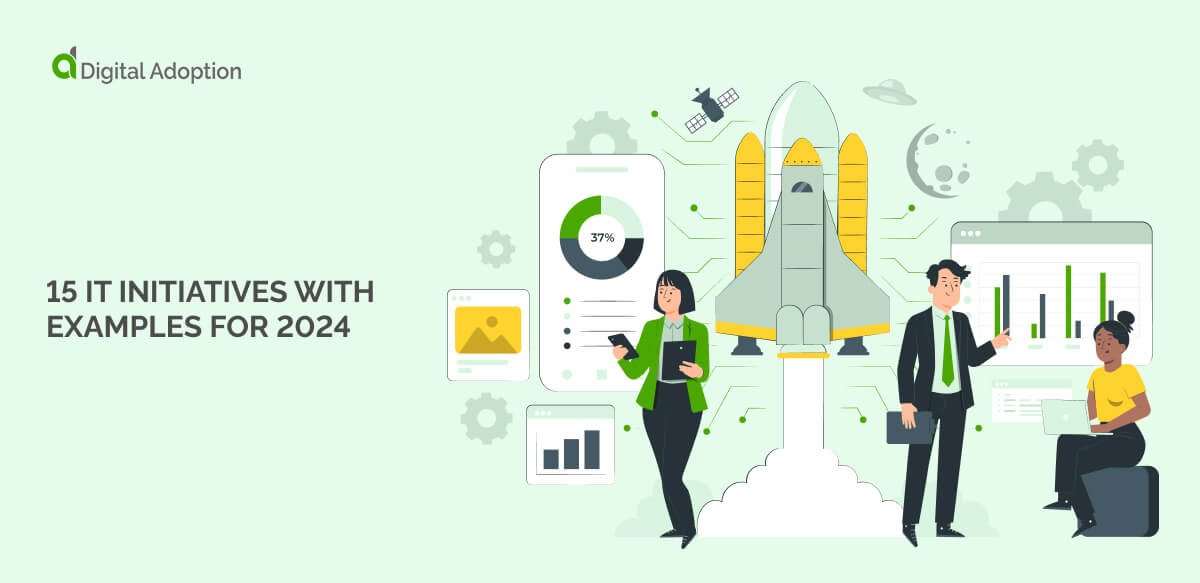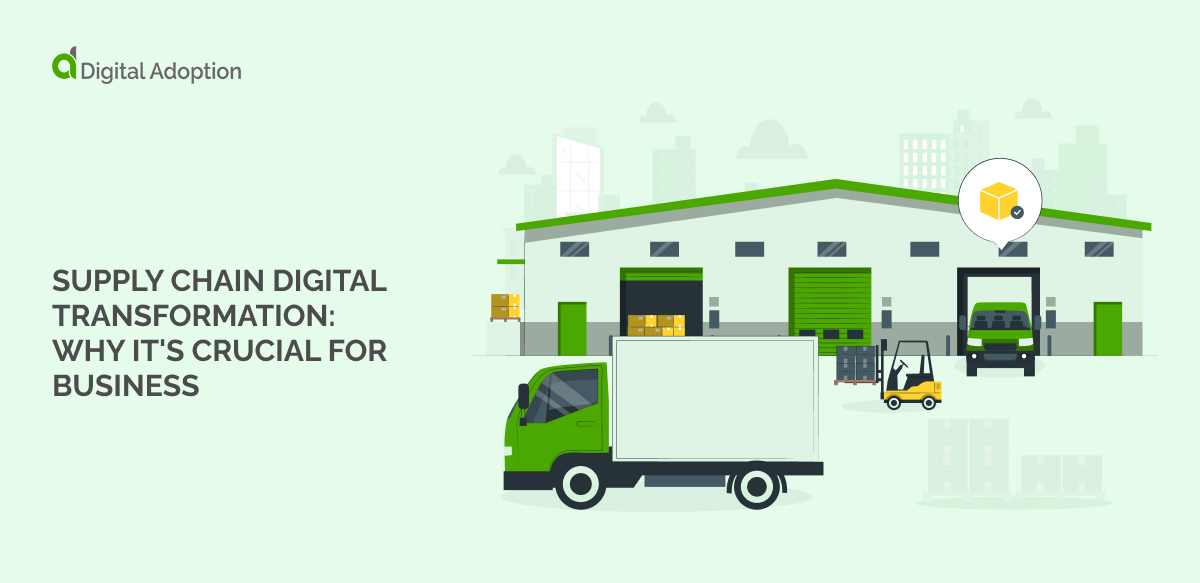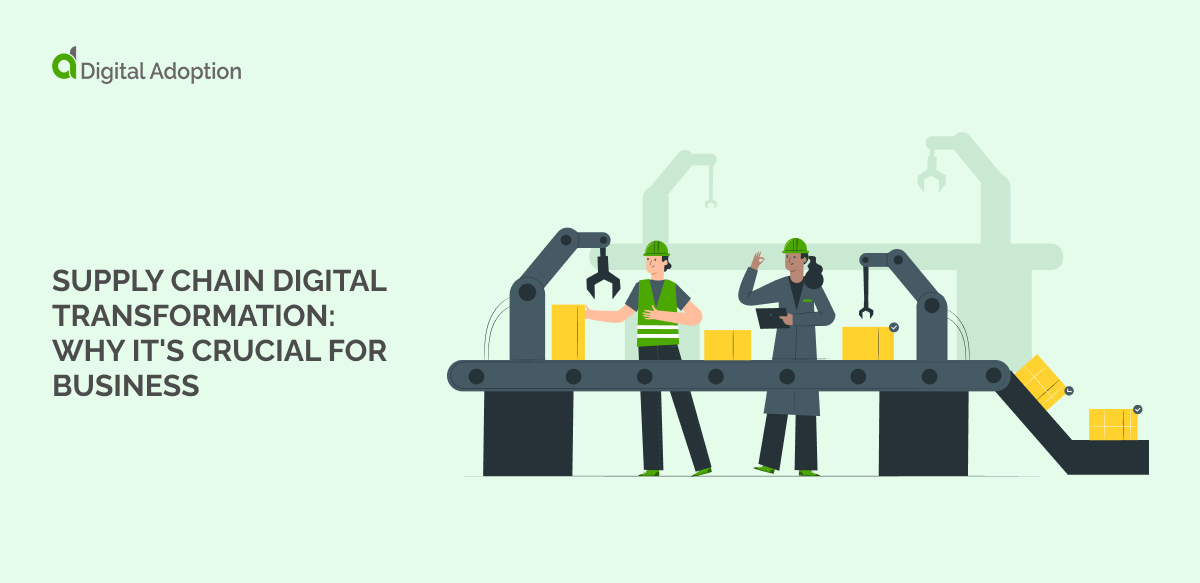As the increasingly digital landscape continues to shift, CIOs and CEOs face a challenge. They must evolve their organization’s information technology infrastructure with high-impact and low-cost initiatives to drive their digital transformation.
Despite efforts and massive investment, our State Of Digital Adoption report shows that the average enterprise wastes USD 17 million annually on missed digital transformation goals. Hitting these goals is challenging but can be manageable with the proper guidance.
This article will explore 15 examples of high-impact, low-cost IT initiatives to guide you toward effective implementation. It will define these initiatives and highlight their importance within organizational frameworks.
Finally, it will present tangible examples to illustrate their efficacy, offering practical strategies for leveraging technology to drive significant results while minimizing financial outlay.
What Are Low-Cost High-Impact IT Initiatives?

The most significant factors influencing IT initiative decisions are change management and resource management, so low-cost, high-impact initiatives balance cost and effectiveness. This approach ensures less financial risk and higher success with innovative IT initiatives, boosting employee motivation and revenue.
Why Are Low-Cost High-Impact IT Initiatives Important?
Low-cost, high-impact IT initiatives help to connect technology and operations with business goals and tell us how to use different technologies to reach these goals. IT initiatives also guide us in upgrading our technology if we want the company to improve in an impactful, cost-effective way.
15 High-Impact Low-Cost IT Initiatives (with Examples)
It’s helpful to look at as many high-impact, low-cost IT initiatives as possible with examples to ensure digital transformation success.
1. A2P (App to Person) Messaging
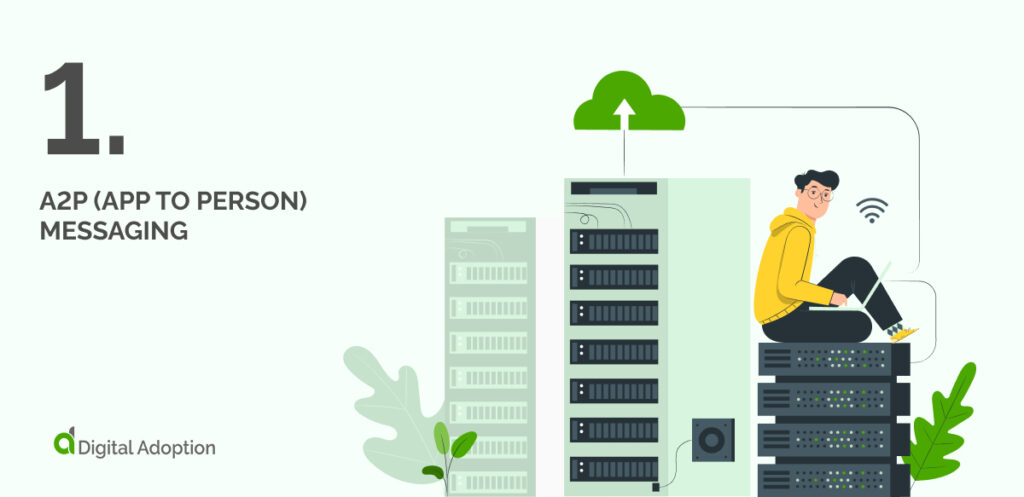
A2P messaging and CPaaS (communications platform as a service) solutions are available and cost less, especially in the U.S. These messaging tools can help your organization improve its digital experiences without expensive changes to internal systems.
Example:
A2P helps businesses send messages automatically, which includes automatic messages when customers message in after business hours or send many notes simultaneously. It can also help you message customers about order details.
2. Alignment With Known And Accepted Frameworks
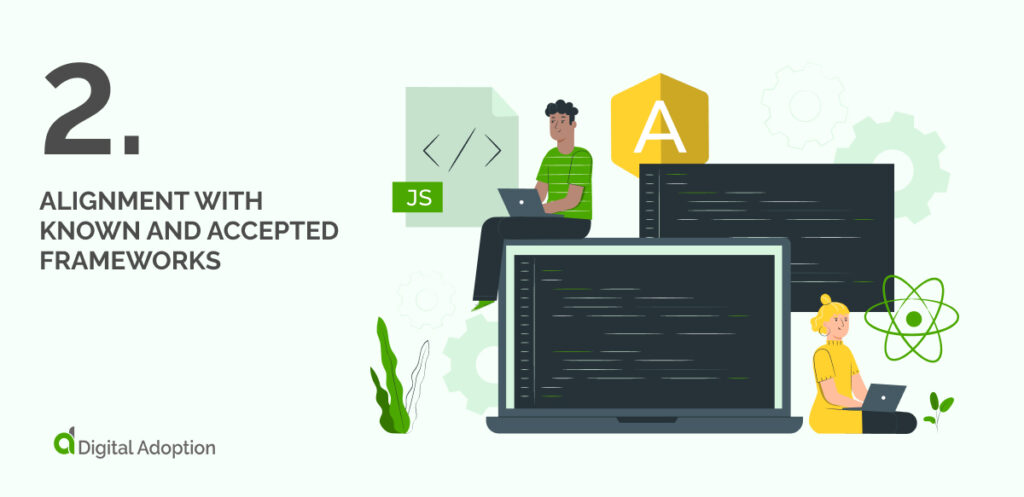
Your IT team needs to do as much work as possible on their own, which promotes alignment with their known and accepted frameworks. Doing so will help prepare them for outside help when the resources are available to hire third-party specialist support.
Example:
Change frameworks, including Lewin’s Model, ADKAR, and Bridge’s Transition Model, can guide IT initiative success within a digital transformation. It is essential to review frameworks regularly, as our State Of Digital Adoption report shows that 60% of enterprises say their change management programs are no longer fit for purpose.
3. Usage Analytics
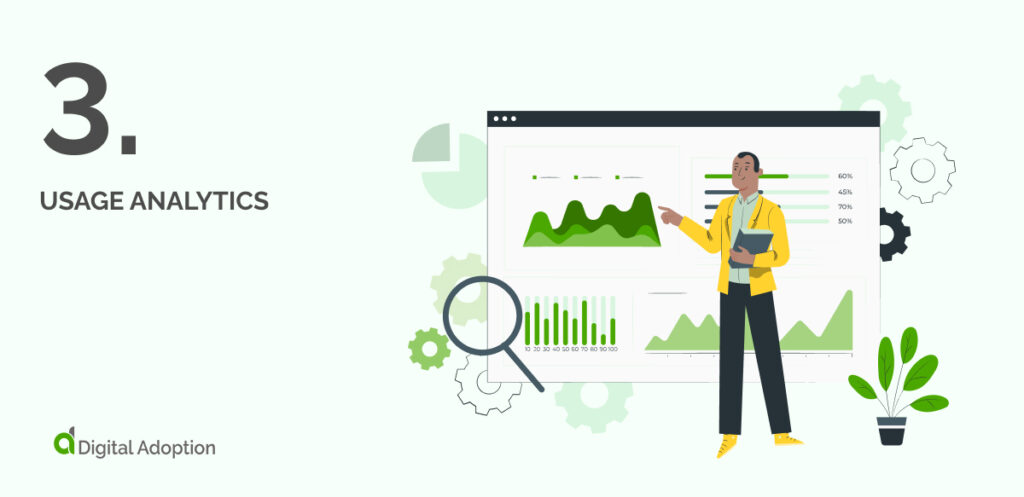
Usage analytics is a way to watch how people use services internally and externally. Data helps show what is working and what isn’t, allowing you to make critical decisions. Putting analytics in place doesn’t cost much, yet they often increase ROI significantly as they maintain a data-driven decision-making approach.
Example:
Utilize usage analytics to collect data to assess the success of the digital adoption of a new software solution. Do so with analytics, such as which tools are most popular with employees, overall product performance, and employee engagement.
4. An Infrastructure-As-Code Model
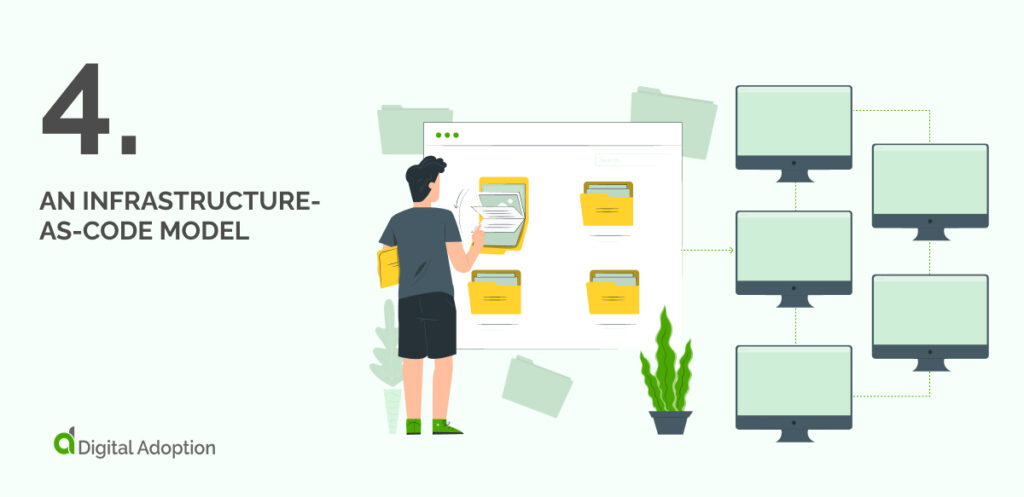
Digital transformation success depends on how companies use technology to do their work, and an infrastructure-as-code model is a good example. It helps them take a more cloud-based approach by using a code-based system. Doing so brings extra benefits such as better security, records of changes, and better tracking of digital tools usage.
Example:
Some tools that help you manage computing services are AWS CloudFormation, Red Hat Ansible, and SaltStack.
5. Tech Consolidation
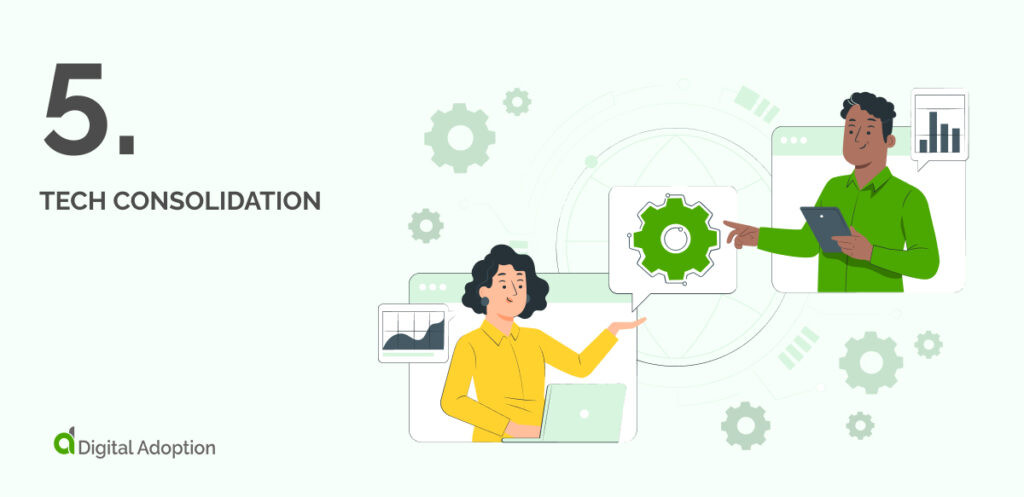
Consolidating shadow IT and the tech stacks, cloud, and software can increase revenue for your organization. It also helps reduce financial risk, promoting business sustainability.
Example:
You may need technology consolidation after product replacement or acquiring a new business unit. These are times to review and change operations due to your evolving needs.
6. Utilizing Every Piece Of Company Data

Look at all the data from your company. Consider what data collection methods you need to improve and what data and processes you no longer require. This approach will save money and time as you utilize every piece of company data and identify and fix security weaknesses.
Example:
Using a Single Source Of Truth (SSOT) is helpful to help you utilize every piece of company data to avoid storing invalid data and ensure everyone knows where to access relevant data.
7. Establishing Clear Business Priorities
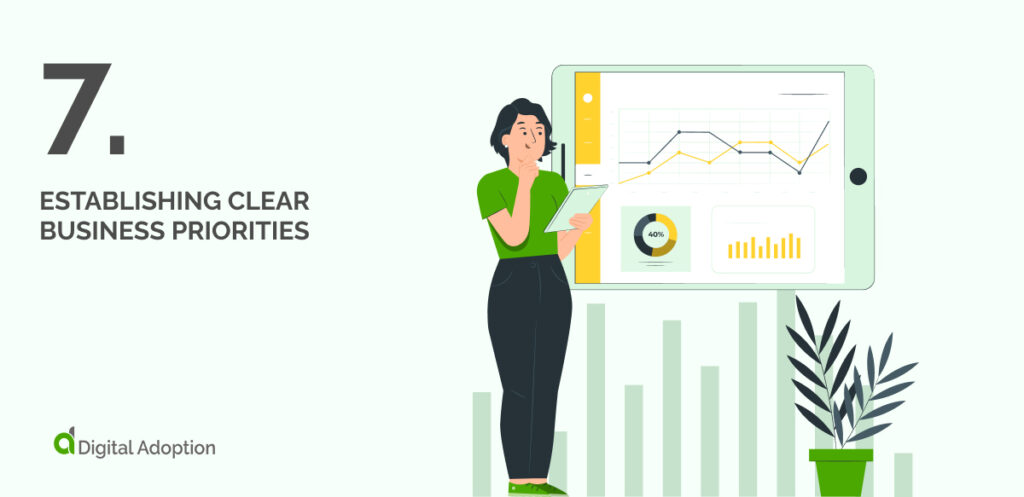
Technology can help you reach your goals, but you need to know what is essential and what isn’t. Teach employees the basics of the process of building a strategy. This knowledge will help them better understand the systems they are following as they apply the data on how to succeed and how their organization makes decisions to establish priorities.
Example:
Your company may have several business priorities that link together. If you train your staff well and seek their feedback on new digital tools as part of a digital transformation, you prioritize empowering employees, staff retention, and upskilling.
8. Moving From On-Premise Infrastructure To The Cloud
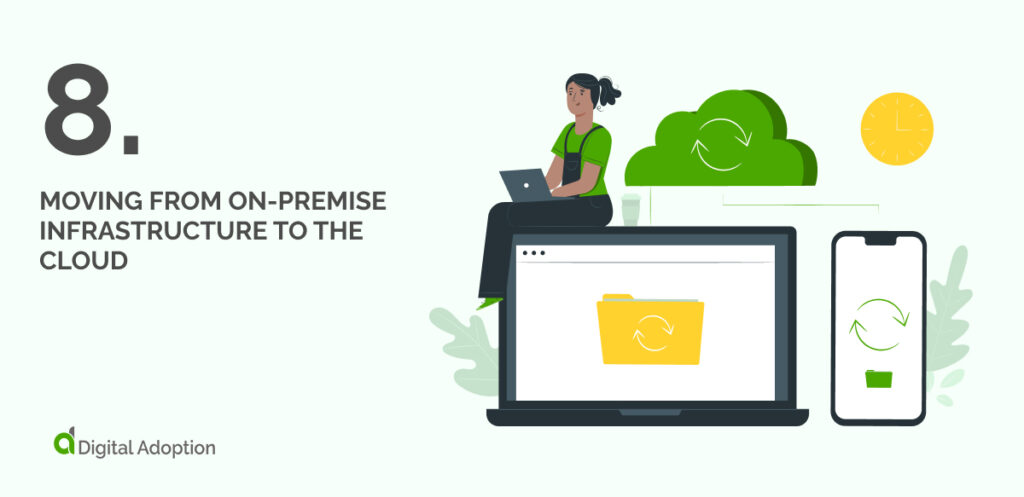
Some companies use legacy systems due to familiarity and the fear of change. Moving to cloud-based services like Workday, ServiceNow, and Salesforce can save money in the long run and help your company grow.
Example:
Many services are available that support cloud software, such as AWS, Google App Engine, and CloudHub.
9. Testing Code With Kubernetes
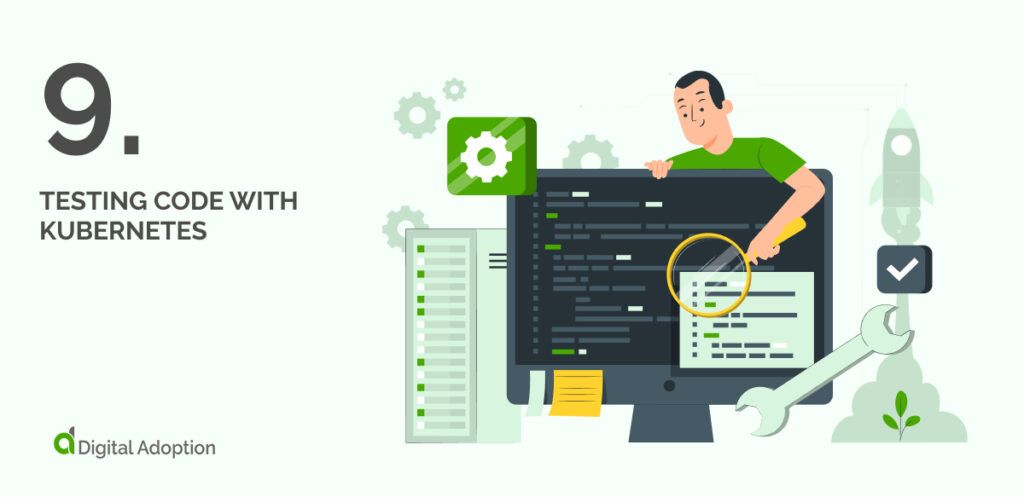
You can use containers and Kubernetes to test code within IT initiatives for a digital transformation project. Testing code like this is low risk and helps you learn quickly, as you get results without using the cloud or worrying about security. Use software trial periods to learn more, build confidence, and experience the cloud-native world.
Example:
Testing code with Kubernetes is applicable when building custom software as it helps ensure the software fits the organization’s needs throughout the building process.
10. Staff Upskilling Programs
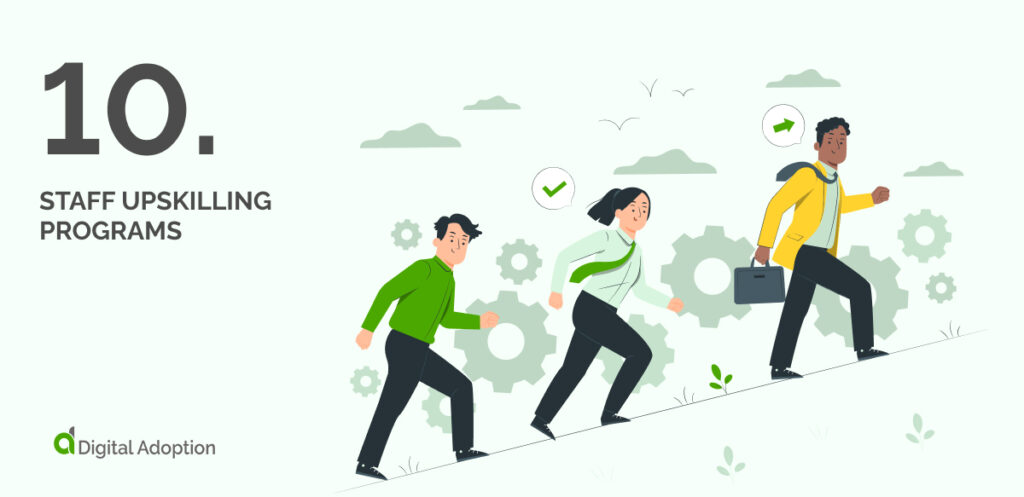
In today’s market characterized by innovation and change, acquiring new technology and learning how to use it is essential. Companies must invest in employee training to be ready for changes in the digital world.
Example:
Upskilling is perfect for when you promote internally. Ensure that you utilize the correct type of upskilling for the need of the employee. For example, mentoring or coaching would be the best form of upskilling for internal promotion so the departing employee can teach the newly promoted employee the skills and responsibilities of their new role.
11. Automating Costly Manual Processes
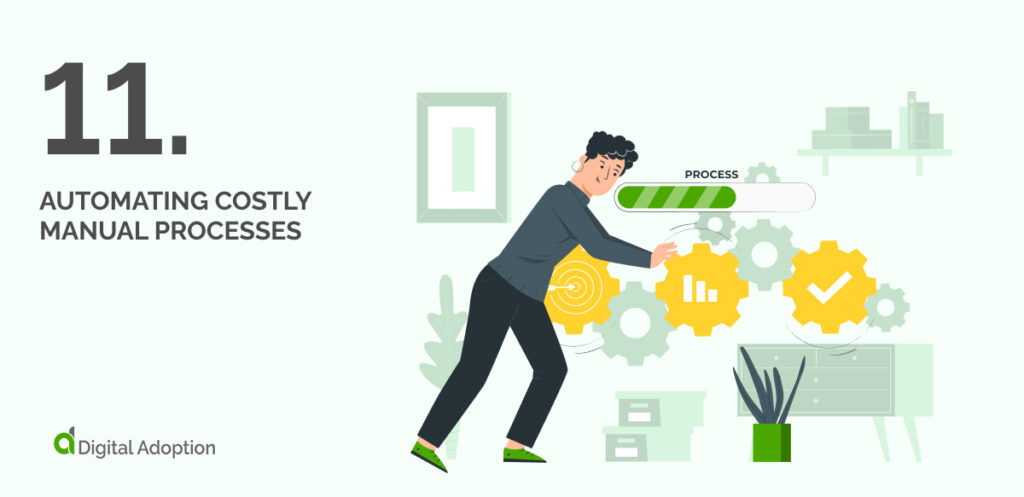
Automating costly manual processes is at the heart of low-cost, high-impact IT initiatives. To achieve this, look for tasks that cost a lot of money or make it hard for employees to complete tasks. Focus on streamlining these processes.
There are ways to do this without spending substantial amounts of resources, and it will help you change how things get done quickly, as well as help you learn how to carry through this approach to every workflow optimization task in the future.
Example:
Examples include chatbots to respond to basic customer service queries, data entry for recruitment and hiring, and digitizing outbound and inbound email communications with customers.
12. Auditing Existing SaaS Apps

To audit existing SaaS apps, look at each of your company’s applications and what function they serve in the business. This information will help you decide if you should keep using them and how many resources you should allocate to each one or if you must acquire new software solutions.
Too many cloud storage or messaging vendors can be expensive, so consider app and vendor management processes to ensure you regularly audit the value of vendors and apps.
Example:
Business continuity planning (BCP), which involves a plan to help companies recover from threat-related incidents, is one of the reasons to audit existing SaaS applications.
13. Focusing On Customers
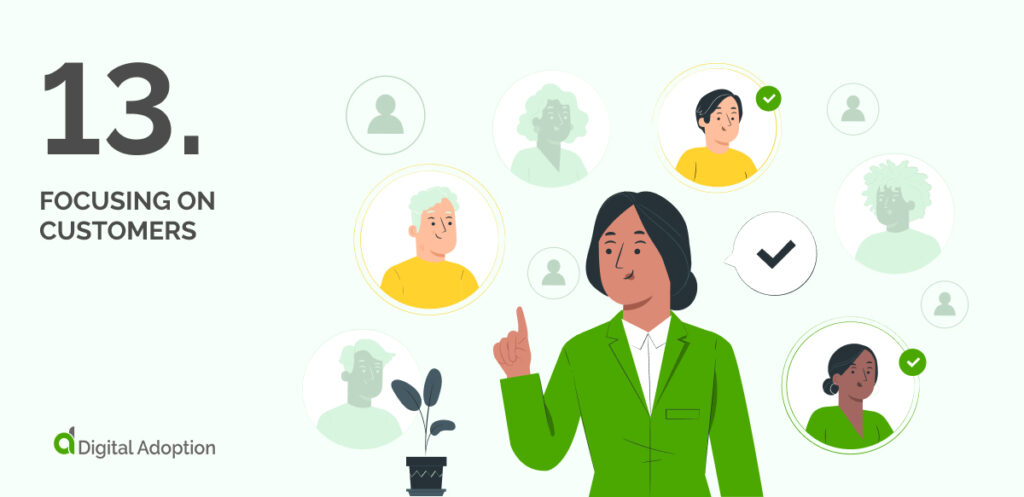
Think about where you can make changes, not what changes to optimize the customer experience. In addition, consider how you can improve customers’ lives after buying your product with customer support.
If you want to make changes, start with what your customers need first, as they drive your sales, and the data they provide is essential to ensure you meet their needs and your revenue grows.
Example:
There are many ways to show your customers you value them. A few examples are continually offering customers new services and technological tools, collecting feedback, and constantly acting on it to improve your service offerings.
14. Building A Culture That Supports Transformation

Digital transformation starts and ends with people: your employees. Despite significant resources, transformations don’t work if people oppose the changes. To ensure success, communicate clearly and involve everyone in decisions. Building a culture supporting transformation is an excellent way to initiate changes with minimal cost.
Example:
Several approaches exist to build a culture that supports transformation. To achieve this, create a safe environment for employees, prioritize values over revenue, and offer and accept feedback and recognition.
15. Investing In Collaborative Tools
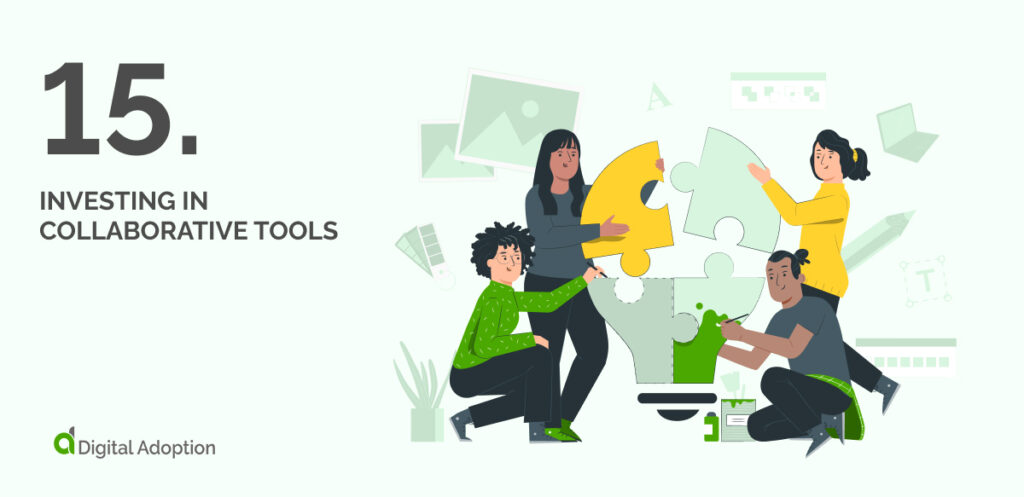
Employees learn most about a transformation’s effectiveness when leaders show the team how valuable something is, not how much it costs. Investing in collaborative tools like Slack and Teams can promote employee productivity, save money on training new people, and move your work online.
Example:
Slack, ProofHub, and Trello are all examples of collaborative tools which help your staff work together to improve business operations and are particularly useful within digital transformations, where collaboration is critical to success.
To Enjoy IT Initiative Success, Prioritize Your Staff
Implementing low-cost, high-impact IT initiatives will create a stronger foundation for success, even though the road to the digital experience for your customers and staff may be bumpy. As discussed in this blog post, you can use fifteen low-cost initiatives to maximize performance, from IT strategies to collaboration tools.
The key to enjoying IT initiative success is prioritizing your staff and investing in sustainable training that allows the workforce to remain upskilled and informed. By equipping your team with the right technology — a proper combination of skills and the ability to embrace change — your organization will enjoy future digital transformation successes.

